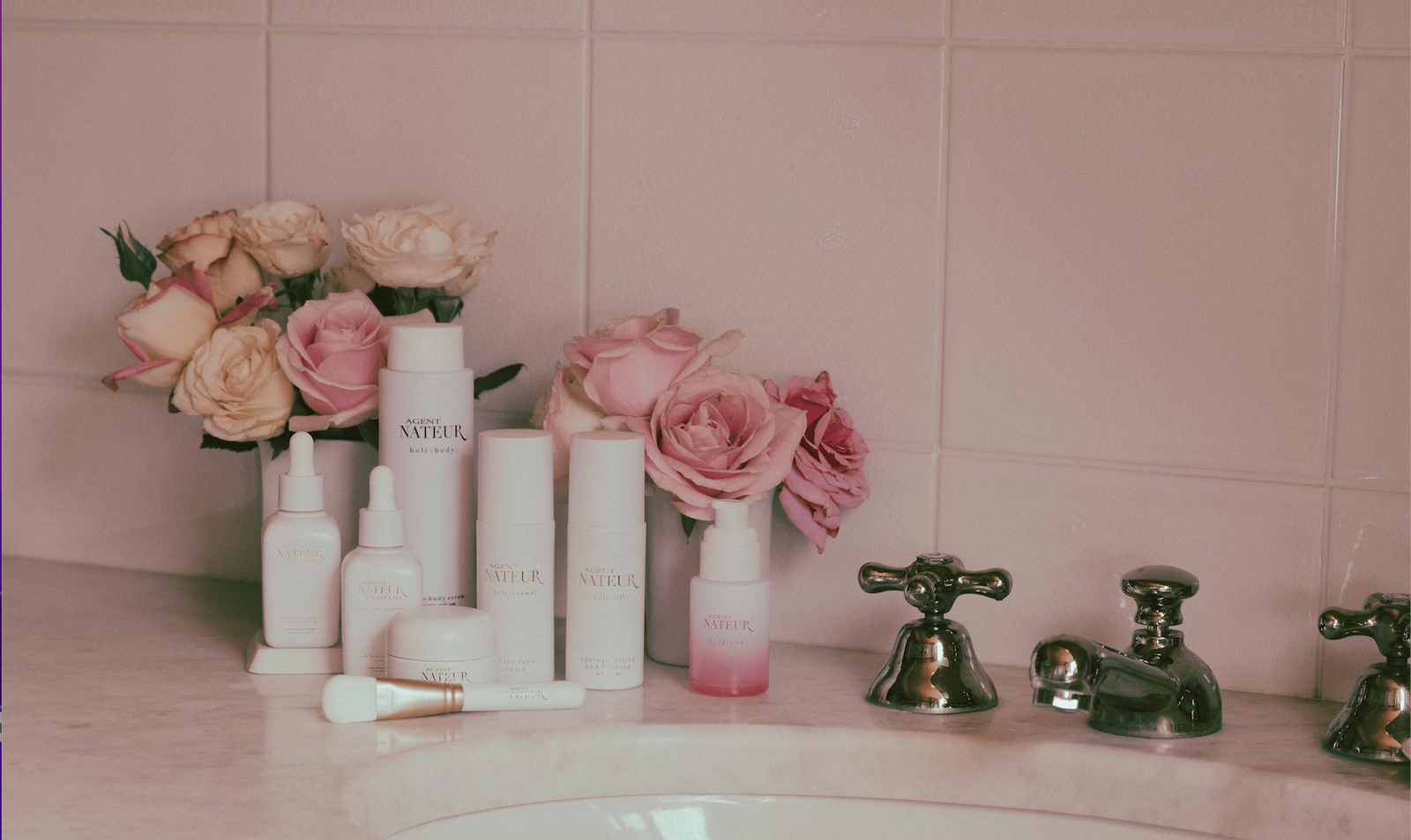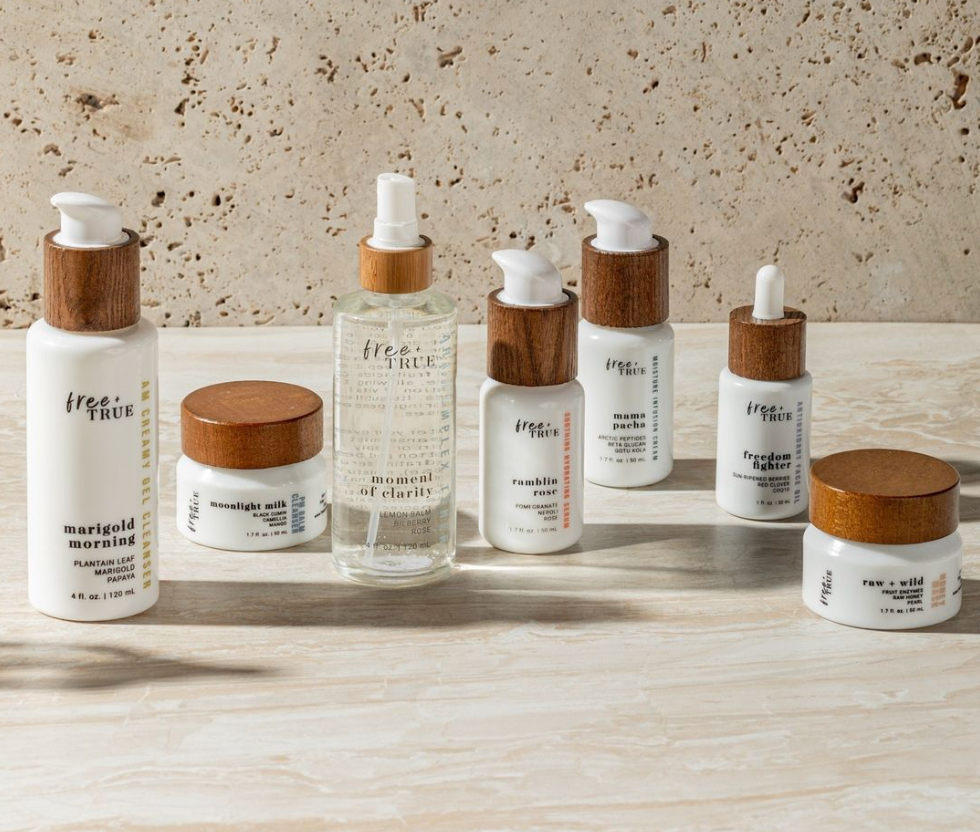Earlier in the history of AILLEA, I read an article in the NY Times about the health struggles of nail salon workers in New York. The impacts were wide spread and devastating - respiratory, cancer, miscarriages and impacts to the health of their unborn children, just to name a few. I knew there had to be a better way to get a mani pedi, so I started doing my research.
What is Traditional Nail Polish Made From?
Nail polish is composed of a variety of different chemicals that control the functionality and quality of the paint. The following are general categories for the 8 main nail polish ingredients.
- Polymer Resin:Gives the paint a strong and shiny finish. Common ingredients: polymer, copolymer, resin, ornitrocellulose.
- Plasticizers: Keeps the resin flexible (no chipping)
- Solvent: Allows the paint to spread smoothly, evenly, and dry quickly. When painted, the solvent evaporates while the polymer hardens. Common ingredients:Ethyl acetate, butyl acetate, propyl acetate, and isopropyl acetate. No longer common:Toluene.
- Dispersants: Additives that help the pigments, solvent, and polymer mix without separation.
- UV Stabilizers: Protect pigments from fading or changing color when exposed to sunlight. Common ingredient: Benzophenone- 1.
- Dyes and Pigments:Dyes and Pigments give the polish life!
- Micas: Reflective, shimmer/glitter particles.
Non-Toxic Nail Polish:
When applied to the nails, the chemicals in nail polish are absorbed into the body. It is unknown what concentration levels cause true damage. However, there is some controversy around the concerns over traditional vs. non-toxic nail paint.
One thing’s for sure- the market lacks regulation from governing bodies (U.S. Food and Drug Administration). Company to consumer transparency is foggy for the fact that no approval or certification is required when launching a new product (like nail polish) or making ‘non-toxic’/ ‘organic’ claims.
Current FDA Regulations of Nail Care Products in the US:
Dyes and Pigments:
Dyes usually come fromorganic materials while pigments are artificial. The FDA must test, certify, and approve all added dyes in nail polish formulas.
Chemical Additives:
- Formaldehyde:
- Cannot exceed more than 0.2% of the total weight of the polish.
- May also be labeled as‘formalin’ or ‘methylene glycol’
The purpose ofFormaldehyde is to strengthen the nail by bonding with natural keratin. However, this chemical is a preservative linked to causing cancer, allergic reactions, skin irritations, and even to cancer by theNational Cancer Institute. Ironically, using polishes containing formaldehyde on a regular basis can cause the nail to become more brittle, more likely to break, and peel.
- Toluene:
- Phthalates:
- Dibutyl Phthlates (DBP) was the most commonly used phthalate used in conventional nail polish followed bydimethyl phthalate(DMP) and diethyl phthalate(DEP).
- <10% of the polish is allowed to be made of phthalates, which adds to the strength of the polish.
Phthalates are used in many different kinds of products: toys, food packaging, pharmaceuticals, and more. In cosmetics, phthalatesprovide flexibility to the mixture's final form. For example, (DBP) prevents nail polish from cracking while (DMP) can be found in other self-care products, like hair spray, giving flexibility to the stiff mist.
The effects of phthalates are currently being researched. However, somestudies have connected developmental and reproductive issues in animals with long-term exposure, along with negative skin reactions like contact dermatitis in humans.
- Camphor:
Camphoris an oil derived from Camphor trees and is used in nail polish to give a glossy finish. Breathing in and/or inhaling Camphor is known to cause headaches, dizziness, nausea, and has caused severe effects like liver dysfunction in past incidents.
Who knew that choosing a nail polish could have such detrimental impacts on daily life?
The key to choosing the perfect nail formula is to be aware of the ingredients and one's sensitivity to chemical solutions. The truth is that nail polish will never be 100% organic, but there are healthier alternatives to choose from.
Keep an eye out for brands advertising “3-free, 5-free, 8-free, 10-free”. These labels refer to the number of toxic ingredients the nail polish doesnot include. With that being said, a little bit of extra research about what we’re putting on and in our body can go a long way. You can also avoid toxic nail polishes by bringing your own nail polish when visiting salons. Always use safety precautions when pampering your nails yourself.
Non-toxic, 8-free, gluten free, and vegan nail polish by AILA!
AILA is an optimal choice of brand for those who place a premium on monitoring what they put on their bodies. The spectrum of colors is perfect for color all year round. AILA labels their nail paints as 8-free, gluten free, and vegan but AILA can easily show its formula is free of more than 25 chemicals that were formerly used to produce nail polish. The 8 ingredients that were kicked to the curb are:
- Parabens, sulfates, formaldehyde, formaldehyde resin, camphor, dibutyl phthalate, toluene, triphenyl phosphate, xylene, bismuth oxychloride, ethyl tosylamide, methylisothiazolione, hydroquinone monomehtyl ether, gluten, fragrance, and animal derivatives.
Summer 2021 is only just getting started. I couldn’t wait to share these trendy nail colors before festivities go full swing!
Coral Red: This is a statement color, yet timeless as it is a perfect shade for formal parties or chilling by the BBQ. Pair with some hand jewelry for the ultimate finished look.
Shade: Bodega
Neutrals: I LOVE bringing the neutrals back out during the warmer months. I think sun kissed skin with a light neutral nail shade is so pretty for the summer! I always have a hard time deciding between a more tan toned, or pink hued color. Specifically, it’s usually a toss up between Make Him Wait All Day or I’m Naked I'm Naked.
Candy Pink: This is another one of my favorite go-to summer colors. It’s so sweet and bright. This shade of pink gives just enough of a pop of color, without drawing too much attention or making it hard to style an outfit. Dress up or dress down, you’ll feel pretty in pink without a doubt!
As I have the nail painting skills of a 3 year old, I still need the nail salon. What I have chosen to do is keep a bag of my AILA polishes in my car (the better than gel top coat is not to be missed - it makes all the difference), that way when its time for my mani-pedi, I can simply bring my own polishes with me. The nail technicians often comment how much they enjoy working with them (no horrible smell and really great application)!
Sources:
FDA: Regulation of Nail Care Products in the US
8 Main Ingredients in Nail Polish
Nail Polish Manufacturing Laws
10 Nail Polish Toxins You Must Avoid









Leave a comment (all fields required)